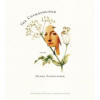The Cosmopolitan
Thimbles, nosegays, daguerreotypes, Baudelaire – only the most precious and precocious of objects are presumed to hold value in the culturally saturated world of Donna Stonecipher’s The Cosmopolitan. Borne of an interest in the found-object shadow boxes of artist Joseph Cornell, and built around isolated quotations of renowned poets, writers, and scholars, this 2007 National Poetry Series Winner ponders the reduction of existence to a collection of novelties showcased behind glass.
Thimbles, nosegays, daguerreotypes, Baudelaire – only the most precious and precocious of objects are presumed to hold value in the culturally saturated world of Donna Stonecipher’s The Cosmopolitan. Borne of an interest in the found-object shadow boxes of artist Joseph Cornell, and built around isolated quotations of renowned poets, writers, and scholars, this 2007 National Poetry Series Winner ponders the reduction of existence to a collection of novelties showcased behind glass.
Much like the contents of Cornell’s boxes, Stonecipher’s poems are compartmentalized, each containing between eight and fourteen short, numbered stanzas of prose poetry. Curious and enticing, The Cosmopolitan assembles tales of myriad nameless personae as they move nonchalantly through the newest museums and oldest churches of the world’s most famous cities. These are world travelers, self-proclaimed global citizens, so-called “voluptés of the clouds” – those who flaunt “an accent in every language: A Russian accent speaking German, a German accent speaking Russian, an indeterminate accent speaking English, and [of course] an English accent when speaking indeterminately.” These personae are the embodiment of the book’s title.
The Cosmopolitan, we learn, sees everything as conquerable: “She hung up the world map on her wall and considered the conquerable entity. Next to it, / she placed colored pushpins in a box.” Elsewhere, the Cosmopolitan desires to qualify his or her own intellect and wit through the pageantry of semi-ridiculous name-dropping, as in: “The girl with the titian hair wearing a Botticelli pink Delacroix jacket was said to have / rubenesque curves.”
Despite these oh-so deliberate attempts at opacity, The Cosmopolitan – though at the furthest reaches of both Occident and Orient – often seeks only the most obvious: the panda bears in China, the surfers in California, the existentialists in France. In the eyes of The Cosmopolitan, the world is akin to a glass-cased exhibit at which one marvels, while always exhibiting a certain sense of detachment (and perhaps even an air of nostalgia), as though life were an endeavor in which one was no longer taking part:
How many stacked-up peacock feathers does it take for the feeling of weightlessness to
be overestimated? She kept one peacock feather in a drawer. We knew they were dynamiting
mountaintops in West Virginia, but still we were two flâneurs in the city, pointing out things we
liked in shop windows.
With precision and delicacy, Stonecipher repeatedly evokes this feeling of weightlessness that blooms from experiencing the exotic:
You like to go from room to room drowning yourself in dahlias. You like to stand in a
crowd and implode and implode till all your individuality melts. You like to be underneath, on
top, afloat. But it thrills you to hear your name in a stranger’s mouth.
Yet as the personae that comprise The Cosmopolitan continue journeying, their attempts to define themselves in relation to their foreign surroundings grow more urgent and, ultimately, their aforementioned enamorment begins to wane. Time itself seems to become a space that one can move through, and as Stonecipher’s personae become more deeply and perplexingly embedded within history, her stanzas concurrently question their relative place among embedded quotations by Kafka, Sontag, Levi-Strauss, and others. As if searching for a permanent home in time, for history without allegory, The Cosmopolitan subtly enacts a palindromic movement that carries the past into the present and then pulls the present back again. “Memorials began moving into more and more of the area presumably meant for the / living,” writes Stonecipher. “The city was slowly turning into a city of the past.” If existence is comprised entirely of referentiality, she seems to ask, where exactly does one stand?
Artfully, charmingly, Donna Stonecipher’s The Cosmopolitan juxtaposes the allure of the exotic with the comfort of the familiar, examining the dynamics of inverses – of insiders and outsiders, of ingress and egress, of departure and return.





